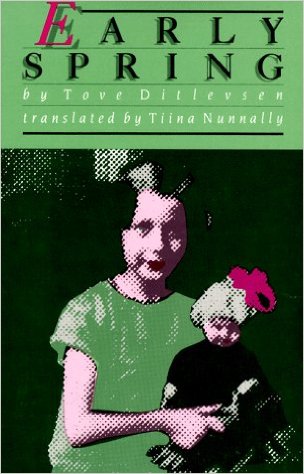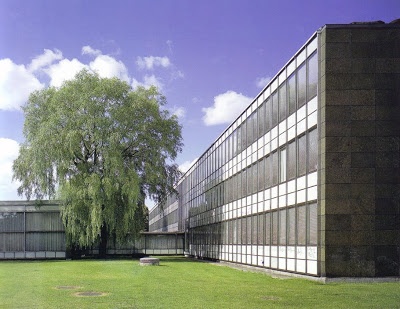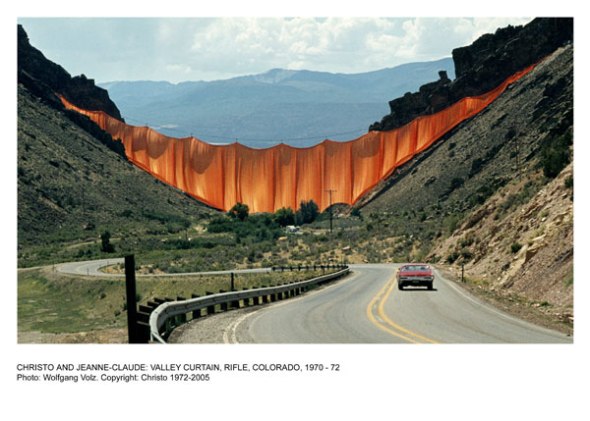Culture in the EU (8): Estonia
Posted: June 21, 2016 Filed under: Architecture, Art, Culture, Dance, European Union, Film, Music - General, New Music, Theatre, Videos | Tags: ando keskküla, ank-64, Arvo Kruusement, arvo pärt, bernard kangro, between three plagues, Ene-Liis Semper, ensemble u, estonia, European Union, fine 5 dance theatre, Hardi Volmer, helen harjak, Helena Tulve, ilmar laaban, jaan kross, jaan toomik, jann kaplinski, jüri arrak, Jüri Reinvere, Kaljo Kiisk, Kaljo Põllu, kristiina kaasik, kuldar sink, Leida Laius, Leonhard Lapin, lepo sumera, Liis Viira, linnahall, maarja kangro, marju musu, Mati Unt, no99, paul-eerik rummo, Priit Pärn, raine karp, raoul kurvitz, Rühm T, Riina Altmäe, soup-69, Tõnu Õnnepalu, tulimuld, united dancers of zuga, vilen künnapu, visarid 2 Comments
[Because of other commitments, it has not been possible to post more in this series for a little while, but I am endeavouring to complete as many as possible before the referendum on Thursday. For now, I will mostly give links and text without so much commentary, which may follow later]
As a solid supporter of the Remain campaign, in the 18 days from June 5th until the European Union Referendum on June 23rd, I am posting a selection of links and other information about music, literature, film, visual art, dance, architecture, etc., from each of the EU nations.
I make no claims to be comprehensive in any case, and my choices undoubtedly will reflect my own aesthetic interests – but I believe that may be more interesting than a rather anonymous selection of simply the most prominent artists or art. All work comes from the post-1945 era, the period during which the EU has come to fruition, but may (and often will) include work which dates from before the nations in question joined the EU. As I am writing in English, where translations exist I will use these. Time does not allow for detailed commentaries, I just throw these selections out there in the hope others will be interested in the extraordinary range of culture which has emerged from citizens of the EU.
Estonia
[With profound thanks to Helen Harjak for various suggestions of Estonian culture to investigate]
A major figure in the post-war Estonian literary scene was the writer and poet Bernard Kangro (1910-1994), who founded the cultural journal Tulimuld, which ran from 1950 to 1993. A selection of his quasi-surrealist poems is available in English translation, called Earthbound.

Here is Kangro’s poem, ‘Late Flowers, Wind, Sea, Sand and Fish’, translated Ivar Ivask.
Wind wilts
late flowers,
tiny blossoms
at edge of bay.
Don’t blame the breeze!
The sea’s there
thundering
upon the sand.
Wave above,
sand blow.
Fish laugh
and skip away.
Another poem can be read here.
Another surrealist Estonian writer was the poet and sound poet Ilmar Laaban (1921-2000), who lived in Sweden from 1944. Here is Laaban’s poem ‘Silence and Violence’, as translated by Richard Adang and Andres Ehin
Silence and Violence
Long ago on a windy hunt
a horrible happiness abruptly bloomed in me
and the landscape congealed only its pungent
blood rustling through my veins the gun smoked
incessantly the hound did not bark
as it gazed at the clouds tightening
into meat and skinning over with fur
streaming tangled by despair
Because on the horizon a stout tower appeared
which swayed slowly between emptiness
and the overflowing clamor of hideous joy
like a gigantic latrine
the sweaty sun mottled Earth and Welkin
until suddenly it was eclipsed by cold
ravens of freedom who carried my eyes
and fresh images like flags in their bills
At twilight which was only flashes
as the sea is but the triumph of the drowned
my hunting jacket was freed of its heavy
web of lust I simply ran forward
along the mute moor coming across
animals with shining coals for hearts
I shot them so many that the road home
was finally choked with grass
Long ago I seized the empty beaker
and faced its inflexible challenge
and ever since this endless draught rinses –
my gun-barrel mouth which sparkles
in the starry sky and when it sees
some too-warm nebula defiling cosmic night
it proclaims ponderously and clearly
I DENY DEATH BUT AFFIRM ICE
Here is Laaban’s sound-text composition Ciel Inamputable (1969)
Amongst the most renowned Estonian writers of the post-war era are Jann Kaplinski (b. 1941), who drew widely upon mythology and Asian thought, and Jaan Kross (1920-2007), who spent an eight-year period as a prisoner in Soviet labour camps. Here is an obituary of Kross in The Guardian. Kross’s novels often had historical settings, but served as allegories of the contemporary situation under Soviet communism. His four volume sequence of novels Kolme katku vahel/Between Three Plagues (1970-1976) told the story of the sixteenth-century chronicler Balthasar Russow, who wrote the chronicle of the Livovian War, detailing his experience of the effects upon the peasantry from which he came.

A sparse form of poetry, reflecting post-1968 disillusionment and disenchantment, can be found in the work of Paul-Eerik Rummo (b. 1942), who also went on to become an Estonian politician. A selection of his poems can be read in translation here; here is one, ‘Crooning’.
Crooning
I am so fleeting
sighed the girl to the sea
oh, what can I do
you are eternal
I am transparent like you
sighed the girl to the window
oh, what can I do
my heart’s in full view
I open like you
sighed the girl to the door
oh, what can I do
the sun steps in
I am so small
sighed the girl to the sun
oh, what can I do
you are so large
I am so foolish
sighed the girl to the wise man
oh, what can I do
everyone is so wise
More on Rummo can be read here.
Poet and author Tõnu Õnnepalu (b. 1962), who has also published under the names Emil Tode and Anton Nigov. His novel Piiririik/Border State (1993), a short novel about the overwhelming and sometimes destructive effect of Western culture upon a Baltic citizen, comes highly recommended; more can be read about it here.
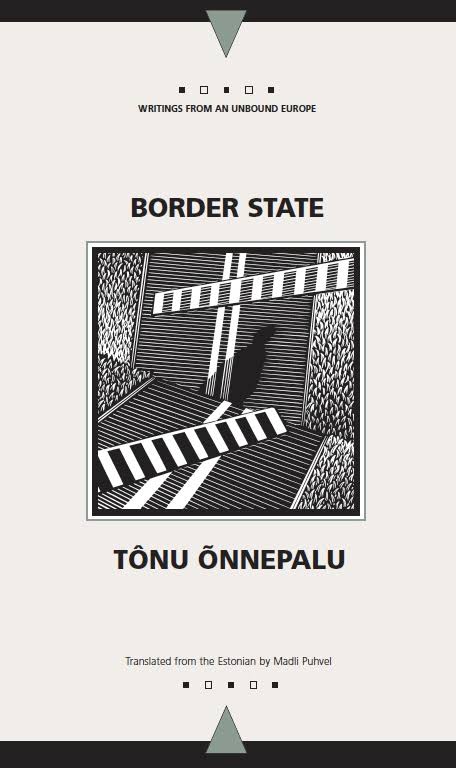
Also, do check out the poet, short story writer and librettist Maarja Kangro (b. 1973). Here is her poem ‘The Butterfly of No Return’, as translated by Ilmar Lehtpere. A further selection of poems, with various translations, can be read here.
THE BUTTERFLY OF NO RETURN
‘again’ is a big word.
slowly and quickly
again
again men rejoice on the radio
that they are on the right road
and talk of the cyclical nature of time
a proper road goes in circles, even I
recognize young skin on the beach and
”et si tu n’existais pas,” is sung loudly
men on the radio speak of the connection
of everything to everything else: ringingly
one says butterfly effect – I lift my wings
a good sleep gives you cyclical time
for after such a sleep you think you’re revived
and again
I flutter my wing
the good men on the radio start coughing
I flap my wings more amply and a wind comes up
the men cough wheezing, the airwaves revolt
ships sink and swimmers drown, the final sleep
comes stormy and grey
let’s think of a word that never was before
was just now
and now isn’t anymore
***
There’s a whining and ringing in the air.
You talk of a lout.
I’m the very one. Through me you’ll never
reach the deeper levels or the heights,
the flash of pure being that you believe
you see in the village drunkard
or the poet gone mad.
When he drinks, secrets come to light.
When I get legless, I attack.
Or I drift off, stinking. My gaze is dark.
I give off my exhaust in your face.
I want lovely meat that won‘t shame me. I’m afraid of losing.
Words anger me. I bellow.
I watch the telly, don’t read, can’t write properly.
Rubbish is left behind me.
I am rubbish. I’m the one you’re talking about.
– Ah no, what are you going on about, it’s me.
– Ah no, it’s me.
– No, I’m the one.
– No, I am. Forgive me.
The whole road is full of us, and our fragile souls
are ringing. Listen, how quietly, dear girls and boys.
One of the first major groups of Estonian artists to look beyond Soviet orthodoxy was ANK-64, who were responsible for resurrecting cubist and constructivist work from earlier in the century. One of the leading figures in this movement was Jüri Arrak (b. 1936), whose work employs cartoon-like imagery and surrealist ideas; other important artists who were involved with this movement include Kristiina Kaasik (b. 1943) and Marju Musu (1941-1980)

Jüri Arrak, Lennuk 6/20 (1972)
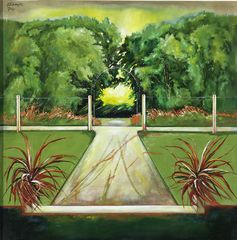
Kristiina Kaasik, Vaade trepilt (1974)

Marju Mutsu, Early in the Morning (1970)
In 1967, artist Kaljo Põllu (1934-2010) created another group called the Visarid, which disseminated much information on Western artistic movements and ideas, not least relating to pop art and graphic design.

Kaljo Põllu, Mängutuba (1967)

Kaljo Põllu, Kuulataja (Vaikus) (1968)

Kaljo Põllu, Keegi (1987)
A starker type of art came from the SOUP-69 group, also inspired by pop art and other movements. Amongst the leading figures here were Leonhard Lapin (b. 1947) and Ando Keskküla (b. 1950).

Leonhard Lapin, Woman-Machine X (1974)
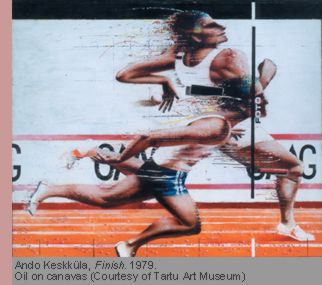
Ando Keskküla, Finish (1979).
Also part of this movement was the architect Vilen Künnapu (b. 1948), who would later engage with post-modern architectural ideas.


Vilen Künnapu, Snail Tower, Tartu (2008)
Other notable modern Estonian architects include Raine Karp (b. 1939) and Riina Altmäe (b. 1949), whose best known work is the brutalist Tallinn City Concert Hall (Linnahall) (1976-1980), shown here from various angles.
The Estonian painter Raoul Kurvitz (b. 1961) formed a group called Rühm T in 1986, whose work (which included performance art as much as painting) was described by them as ‘Cold Expressionism’. Here is Kurvitz’s painting Chapelle (1999):
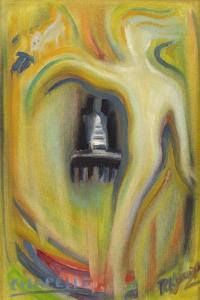
And here is a picture of Kurvitz’s ‘Reconstructed Environment’ Maelstrom (1999/2013):

An interview with Kurvitz can be read here, while more information on his work can be read here.
One artist inhabiting the wilder realms of video and performance art is Jaan Toomik (b. 1961), some of whose work was inspired by the Viennese Actionists, and involves various types of degradation to the body, use of bodily fluids, and so on, but also clear political themes, as well as a recurrent concert with the nature of communication. An interview with Toomik can be read here, and here are some videos of his work.
Another is Ene-Liis Semper (b. 1969), whose work focuses on the body, and especially the mouth and tongue. More can be read on her work here, not least her notorious Licked Room (2000), in which she literally licked a room clean with her tongue.
Here are some samples of Semper’s work:
Semper also formed the theatre group NO99 together with Tiit Ojasoo. Here is a video about their work:
This is one of NO99’s best-known works, NO83 How to Explain Pictures to a Dead Hare, inspired by Joseph Beuys.
Another important figure in radical contemporary Estonian theatre (about which more can be read here) is writer and director Mati Unt (b. 1944). Here is a video of his production Hot (2002).
Best-known of Estonian composers is undoubtedly Arvo Pärt (b. 1935), whose works such as Fratres (1977), Tabula Rasa (1977), Spiegel im Spiegel (1978), and St John Passion (1982) appealed to certain Western ideals of ‘spiritualism’ and won world renown as a result. But not all of Pärt’s work is like this; the cello concerto Pro et contra (1966) is clearly indebted to aspects of a Western avant-garde language, including collage-like techniques, whilst in Credo (1968) for choir, piano and orchestra, Pärt distorts and defamiliarises Bach’s C major Prelude from Das wohltempierte Klavier, Book 1.
Here are two examples of Pärt’s later work:
Another composer of the same generation whose work Kuldar Sink (1942-1995), who began engaging with some modernist traditions, including the neo-classicism, the Second Viennese School, aleatoric composition, and even happenings (Sink, like Pärt, and ANK-64, was linked to an Estonian Fluxus movement in the late 1960s).
In later work, before his death in a house fire, Sink turned to Central Asian folk musics and drastic simplification.
A younger composer who also traversed a path from the avant-garde to modalism and postminimalism (from the early 1980s onwards) was Lepo Sumera (1950-2000)
Lepo Sumera, Pantomiim/Pantomime (1981)
Lepo Sumera, Senza metro (1986)
Lepo Sumera, Tähed / Stars for soprano and piano (2000)
In the fascinating work of Jüri Reinvere (b. 1971), however, one finds a particular type of fusion or interplay of modernist, aleatoric, and romantic elements to varying degrees.
Jüri Reinvere, t.i.m.e. (2005)
Jüri Reinvere, Requiem (2009), excerpt.
Helena Tulve (b. 1972) combines modal elements with a wider musical language influenced in part by musique spectrale, and in some ways reminiscent of the work of Kaija Saariaho.
A much more pared-down music can be found in the work of composer and harpist Liis Viira (b. 1983), notorious for her Reverbeebi/Baby Symphony (2015), in which babies’ voices were combined with instruments.
The group Ensemble U have garnered attention through their creation of an ‘audience orchestra’ in which the audience members control much of the musical decision making.
Estonian cinema is generally thought to have come into its own in the 1960s. One of film which generated a fair degree of international interest was Arvo Kruusement’s Kevade/Spring (1969), based on a popular novel by Oskar Luts, a coming-of-age story set at the end of the 19th century. Here is a section of it, alas without subtitles, but which enables one to sample the visual qualities.
(the rest of the film can be viewed on the same YouTube channel)
Here is a film from the previous year, Kaljo Kiisk’s Hullumeelsus/Madness (1968)
And here is Leida Laius’s Kõrboja peremees (1979)
Of post-independence Estonian cinema, required viewing includes Hardi Volmer’s parody of the Russian Revolution, Minu Leninid/All My Lenins (1997), here available with English subtitles.
There is also an important tradition of Estonian animated film, in which the leading figure is Priit Pärn (b. 1946). Here is his Ein murual/Breakfast on the Grass (1983, released 1986)
Here is a clip from Pärn’s 1992 film Hotel E:
Many other of Pärn’s animations can be viewed online.
An article on the evolution of Estonian contemporary dance post-independence can be read here. Here is a clip of the work of Fine 5 Dance Theatre, founded in 1992:
One can read about the United Dancers of Zuga here (unfortunately I have not found a good clip of their work).
Culture in the EU (5): Cyprus
Posted: June 8, 2016 Filed under: Architecture, Art, Culture, Film, Literature, Music - General, New Music, Theatre, Videos | Tags: Adamantios Diamantis, ahmet baheddin, Christina Athinodorou, Christodoulos Makris, cyprus, cyprus college of art, Derviş Zaim, DNA (Dimiourgi Neas Antilipsis), Fedros Kavallaris, Floridis Adonis, George Filis, Giorgos Neophytou, Haris Sophocleous, Jack Iacovides, Kyriakos Charalambides, Mehmet Yaşın, mikros kosmos, Neoptolemos Michaelides, Neşe Yaşın, Nikoladis Theodoros, one/off, Orsetis Laskos, Panicos Chrysanthou, Panos Ioannides, quadraphonic, rotting christ, Savvas Christodoulides, Stass Paraskos, Tasos Stylianou, The Secret History of the Sad Girls, Theatre Organization of Cyprus, Vangelis Oikonoimides, Yannis Kyriakides 2 CommentsAs a solid supporter of the Remain campaign, in the 18 days from June 5th until the European Union Referendum on June 23rd, I am posting a selection of links and other information about music, literature, film, visual art, dance, architecture, etc., from each of the EU nations.
I make no claims to be comprehensive in any case, and my choices undoubtedly will reflect my own aesthetic interests – but I believe that may be more interesting than a rather anonymous selection of simply the most prominent artists or art. All work comes from the post-1945 era, the period during which the EU has come to fruition, but may (and often will) include work which dates from before the nations in question joined the EU. As I am writing in English, where translations exist I will use these. Time does not allow for detailed commentaries, I just throw these selections out there in the hope others will be interested in the extraordinary range of culture which has emerged from citizens of the EU.
Cyprus
Writing some of these blog posts is in many ways a discovery for me, and sometimes involves laying down pointers to work about which I have read interesting things, but not read itself (but intend to do so). Reading poetry in translation is always problematic, but I am struck by the following poem, ‘Gece otobüsü/Night Bus’ by Turkish-Cypriot Mehmet Yaşın (b. 1956), translated by Taner Baybars:
NIGHT BUS
to Baris
Women were lying with horrible knife wounds
the bus drove on without stopping
those living on the floors above
had bolted their doors to the screams below.
I watched the same reel, shivering lightly
night after night,
secretly learning my part every day,
and I waited my turn
to see my own face on the screen,
I’ve paid the entrance fee to enter myself.
The night kissed him on the brow, on the lips,
opened the door and ushered him to his seat,
— neither man, nor woman —
mass produced dollies to tickle the flesh
blood-red drinks in hand
went round and round the house of lust.
They asked us who we were, but we forgot our names,
we had been severed from ourselves
by horses with dark wings…
The night changed our clothes
and fastened sequins on our hair
then carried us off to a sunken land.
Women were lying with horrible knife wounds
and the bus drove on without stopping.
Other poetry of Yaşın in translation can be read here.
Equally worth checking out in translation is Greek-Cypriot Kyriakos Charalambides (b. 1940). Here is a 1989 poem of his, taken from this blog which contains a range of translations and links:
CHILD WITH A PHOTOGRAPH
A child with a photograph in hand,
a photograph in the profundity of his eyes,
held upside down, was staring.
Around the child a crowd; and he
had in his eyes a small photograph,
a big one on his shoulders and vice versa —
a big one in his eyes, upon his shoulders a smaller one,
and in his hand one even smaller still.
He was amid a crowd screaming chants
and he was holding it upside down; it troubled me.
I approach him bypassing signs
of loved ones or arcs and voices
frozen in time and all completely inert.
The photograph bore some resemblance to his father.
I set it straight, and still I saw
the missing man with his head upside down.
Just like the king, the jack and the queen,
which, seen upturned, are found to be straight,
this man, as well, when looked at straight,
turns upside down and stares.
Many of Charalambides’ poems have been translated into English, some of them published by Dionysia Press.
An example of something I would like to read, but have not yet, would be the novel Üzgün Kızların Gizli Tarihi/The Secret History of the Sad Girls, about an affair between a Greek-Cypriot man and a Turkish-Cypriot woman, written by Turkish-Cypriot writer Neşe Yaşın (b. 1959). It appears as if a translation is at least underway.
Yaşın has apparently been attacked in the right-wing Turkish press for this book, called a ‘traitor and prostitute’ – more details can be read here. I cannot say any more about the book, but will also point to a small and striking selection of Yaşın’s poetry in English translation here.
Also of great potential interest is the work of Greek-Cypriot writer Panos Ioannides (b. 1935), much of whose work has been widely translated into many languages. Here is a short review of the collection Gregory and other Stories, published in English in 2014.
 .
.
The Nicosia-born poet Christodoulos Makris (b. 1971) moved to live and work in the UK. Here is a very interesting interview following the publication of his collection The Architecture of Chance, speaking of issues of language, languages (and the model of Beckett as a multilingual writer), form and his relationship to his home country, and here is Makris’s blog.

A paper by Petro Phokaides suggests that architectural modernism came to Cyprus in the 1930s, but gained a new symbolic value after independence in 1960. Here are some notable examples he gives:

Neoptolemos Michaelides, Neoptolemos Michaelides House, Nicosia (1965).
Ahmet Baheddin, Suleyman Onan House, Nicosia (1961-1966).

Neoptolemos Michaelides, AlexandrosDemetriou apartment building, Nicosia (1963-1965).
Neoptolemos Michaelides, Grecian Park Hotel,Famagusta (1965).
A composer who also studied architecture is Fedros Kavallaris (b. 1950):
Compositional directions drawing more widely upon international avant-garde tendencies (and popular musics) can be found in the work of Yannis Kyriakides (b. 1969):
Or Tasos Stylianou:
Or Christina Athinodorou (b. 1981):
Or Haris Sophocleous (b. 1977):
And here is a diverse selection of popular music from Cyprus:
The artist Adamantios Diamantis (1900-1994) travelled around Cyprus to study many peoples, in a type of anthropological approach to painting, producing his massive work The World of Cyprus between 1967 and 1972, which portrays, and arguably celebrates, a traditional way of life. Here is an article on the work, with links to illustrations, and here is a news feature on the return of the work to Cyprus in 2013.
From a later generation, a more forward-looking approach can be found in one of the leading Cypriot artists was Stass Paraskos (1933-2014), who did spend most of his working life in the UK. Some of his paintings can be viewed here. Paraskos founded the Cyprus College of Art in 1969, which came to attract many international figures both to study and teach.

Stass Paraskos, Lovers and Romances (1966).
A very different type of work is that of Savvas Christodoulides (b. 1961), who manipulates everyday objects in distorted fashion. His website is here.

Savvas Christodoulides, My Precious II (2011)
Another general article on Cypriot art can be viewed here.
Even more boundary-breaking is the work of Cypriot-born performance artist Stelarc. His work deals with robotics and bodily modification, placing cameras in his lungs, colon and stomach, and most notoriously having an ear created from biocompatible material attached to his left arm.

Nina Sellars, Oblique – Images from Stelarc’s Extra Ear Surgery.
Here is the main website for Stelarc, and here is an interview with him:
And here is a film of his 1997 performance Parasite.
In 1970, the Theatre Organization of Cyprus (THOC or ΘΟΚ) was founded. This consisted of multiple ‘stages’: a Main Stage for large ancient, classical and modern plays, a New Stage: for smaller plays in smaller spaces, a Children’s Stage, and (of most interest to me!) an Experimental Stage promoting more radical new work. Here is an article on the playwright Giorgos Neophytou (b. 1946), influenced by Brecht, who worked extensively in THOC.
Here is some of the work of Cypriot theatre troupe One/Off, performing Cypriot work in Avignon in 2011:
There are two major studies in English of Cypriot cinema, which are the following:
Little of the earlier wave of post-independence Cypriot cinema, such as the work of George Filis, Vangelis Oikonoimides’s O Paras o Maskaras/Money, Mischievous (1969) or Orsetis Laskos’s Diakopes stin Kypro Mas/Vacation in Our Cyprus (1971) is available to view online.
From Turkish-Cypriot filmmaker Derviş Zaim (b. 1964), Tabutta Rövaşata/Somersault in a Coffin (1996), a film about a homeless criminal and a car thief, can be viewed in full, with English subtitles here:
Another film of Zaim, Filler ve Çimen/Elephants and Grass (2001)
A controversial film was Nikoladis Theodoros and Floridis Adonis’s Kalabush (2002), portraying the story of an illegal immigrant arriving in Cyprus, which he mistakes for Italy, but comes to inhabit a world on the margins of Cypriot society.

Equally controversial was Panicos Chrysanthou’s Akamas (2006), portraying a love affair between Turkish and Greek Cypriots (as in Neşe Yaşın’s novel mentioned above).

However, a collaboration between Chrysanthou and Zaim, the film Paralel Yolculuklar/Parallel Trips (2004), attempts to show the conflict in the island from both sides.
Finally, here is a selection of the photographs of Jack Iacovides:
Culture in the EU (2): Belgium
Posted: June 7, 2016 Filed under: Art, Culture, Dance, European Union, Film, Literature, Music - General, New Music, Theatre, Videos | Tags: absynthe minded, andré laporte, Anne teresa de Keersmaeker, antwerp six, arne quinze, belgium, Benoît Poelvoorde, chantal akerman, christian dotremont, club moral, collegium vocale, dirk braeckman, European Union, Françoise Mallet-Joris, Frédéric Baal, henri pousseur, hooverphonic, hugo claus, jacques izoard, jan fabre, karel goeyvaerts, kristen hemmerechts, lisa de boeck, logos foundation, luc brewaeys, man bites dog, marcel broodthaers, Marilène Coolens, marthe donas, memymom, Michel Dezoteux, monika van paemel, ovil bianca, philippe herreweghe, raoul servais, rosas, serge verstockt, wim mertens 3 CommentsAs a solid supporter of the Remain campaign, in the 18 days from June 5th until the European Union Referendum on June 23rd, I am posting a selection of links and other information about music, literature, film, visual art, dance, architecture, etc., from each of the EU nations.
I make no claims to be comprehensive in any case, and my choices undoubtedly will reflect my own aesthetic interests – but I believe that may be more interesting than a rather anonymous selection of simply the most prominent artists or art. All work comes from the post-1945 era, the period during which the EU has come to fruition, but may (and often will) include work which dates from before the nations in question joined the EU. As I am writing in English, where translations exist I will use these. Time does not allow for detailed commentaries, I just throw these selections out there in the hope others will be interested in the extraordinary range of culture which has emerged from citizens of the EU.
Belgium
I will begin with one of the most important of all artists of the twentieth century, poet, post-Duchamp artist and filmmaker Marcel Broodthaers (1924-1976). Here is a site with lots of information on his work and illustrations.

Citron-Citroen 1974 Marcel Broodthaers 1924-1976 Purchased 1977 http://www.tate.org.uk/art/work/P07211
Marcel Broodthaers, Citron-Citroen, réclame pour la Mer du Nord (Advertisement for the North Sea) (1974).
And here one can listen to his ‘Interview with a Cat’.
Furthermore, here is Broodthaers’ 1968 film Le Corbeau et le Renard.
Here is a discussion of his work at the time of a 2016 retrospective at MOMA.
And here is a reading of Broodthaers’ poetry:
This site gives information on the experimental Belgian poet Hugo Claus (1929-2008), including some important links. Furthermore, at this site one can read and listen to a variety of Claus’s work.
Amongst other important Belgian writers are Françoise Mallet-Joris (b. 1930), about whom one can watch a feature here (only an excerpt available to those who have not subscribed). A biography and list of works (in French) is here. And some information on translations of highly-regarded writer Monika van Paemel (b. 1945) can be found here. Here are details of a translation of her story ‘The Accursed Fathers’. Some information on writer Kristien Hemmerechts (b. 1955) can be found here.
A useful page on Christian Dotremont (1922-1979), who brought together poetry and painting, is here.

And here is a poem by Jacques Izoard (1936-2008). A wider range can be viewed here.
This site gives much detail on the work of Gent artist Marthe Donas (1887-1967).

Marthe Donas, Intuition No. 19 (1958).
The website of multi-faceted artist Jan Fabre (b. 1958) is here, whilst that of conceptual artist Arne Quinze (b. 1971) is here.

Pictures related to my Brussels Photo Blog dedicated to anyone that wish to know more about the major or less known attractions of the city of Brussels.
Arno Quinze, Cityscape Wooden Sculpture.
Here is a site on the fantastic photography of Dirk Braeckman (b. 1958).


The senior figures of post-war Belgian music were Henri Pousseur (1929-2009) and Karol Goeyvaerts (1923-1993), both of seminal importance in the history of serial music.
Another figure who is a prominent and generous presence in Belgian musical life is André Laporte (b. 1931):
A very different type of music can be found in the minimalist work of Wim Mertens (b. 1953), known in particular for his music for the film The Belly of an Architect by Peter Greenaway, and for an extremely important book on American minimal music.
Amongst numerous younger figures, one should listen to the music of Serge Verstockt (b. 1957):
And also the remarkably fluent and effortless composer Luc Brewaeys (1959-2015), who was tragically lost to cancer last year.
An important institution for the promotion of new music in Belgium is the Logos Foundation, which is currently threatened with closure.
Amongst the numerous early music groups in Belgian, one of the most important is Collegium vocale, under the general direction of Philippe Herreweghe. Here they are singing Jean Langlais:
Here is a range of significant Belgian popular music, ranging from noise music to trip-hop.
Here is the 1966 animation Chromophobia by Raoul Servais (b. 1928):
A hugely important feminist work is Chantal Akerman’s 23 quai du Commerce, 1080 Bruxelles (1975):
Whilst the disturbing 1992 film Man bites Dog, directed by Rémy Belvaux, André Nobzel and Benoît Poelvoorde (the latter in the main role), received some international attention upon release:
One of the most significant post-war theatre directors in Belgium is Michel Dezoteux (b. 1949). Here is is Le Revizor (2008), based on the work of Nikolai Gogol:
And here is an interview with another hugely important figure in contemporary Belgian theatre, Frédéric Baal (b. 1940):
The choreographer Anne Teresa De Keersmaeker (b. 1960), created the dance company Rosas, who were resident at La Monnaie from 1992 to 2007. Here is a video of their work:
Finally, an article on the fashion collective, the Antwerp Six.

Culture in the EU (1): Austria
Posted: June 6, 2016 Filed under: Architecture, Art, Culture, Dance, European Union, Film, Literature, Music - General, New Music, Videos | Tags: austria, beat furrer, elfriede jelinek, ernst jandl, gerhard rühm, hans c. artmann, János Kárász, karlheinz essl, klaus lang, konrad bayer, kurt kren, Maria Auböck, michael haneke, peter handke, peter kubelka, peter tscherkassky, thomas bernhard, valie export, wolfgang bauer, wolfgang mitterer, xenia hausner 9 CommentsAs a solid supporter of the Remain campaign, in the 18 days from June 5th until the European Union Referendum on June 23rd, I am posting a selection of links and other information about music, literature, film, visual art, dance, architecture, etc., from each of the EU nations (I use the term EU to refer to all stages of the project, from the founding of the European Coal and Steel Community in 1952, then the European Economic Community in 1957, through to the European Community in 1993, until final subsumation in the European Union in 2009) . These selections are initially posted on Facebook, then blogged afterwards (including some suggestions from others). The eight nations with the largest populations (in descending order: Germany, France, UK, Italy, Spain, Poland, Rumania, the Netherlands) will get a whole day each, all others will get two days. Otherwise these will be in alphabetical order, as follows:
5/6 Austria, Belgium
6/6 Bulgaria, Croatia
7/6 Cyprus, Czech Republic
8/6 Denmark, Estonia
9/6 Finland, Greece
10/6 France
11/6 Germany
12/6 Hungary, Ireland
13/6 Italy
14/6 Latvia, Lithuania
15/6 Luxembourg, Malta
16/6 Netherlands
17/6 Portugal, Slovakia
18/6 Poland
19/6 Romania
20/6 Slovenia, Sweden
21/6 Spain
22/6 UK
I make no claims to be comprehensive in any case, and my choices undoubtedly will reflect my own aesthetic interests – but I believe that may be more interesting than a rather anonymous selection of simply the most prominent artists or art. All work comes from the post-1945 era, the period during which the EU has come to fruition, but may (and often will) include work which dates from before the nations in question joined the EU. As I am writing in English, where translations exist I will use these. Time does not allow for detailed commentaries, I just throw these selections out there in the hope others will be interested in the extraordinary range of culture which has emerged from citizens of the EU.
Austria
I will open with a site devoted to the work of writer Thomas Bernhard (1939-1989).
This novel in particular is a big personal favourite.

Another major Austrian writer (and equally misanthropic!) is the Nobel Prize winning Elfriede Jelinek (b. 1946), a site devoted to whom can be found here. Here is one of her most notorious books.

Anyone interested in experimental writing needs to look into the work of the Wiener Gruppe, not least this anthology.

Here is a short article about the group and in particular leading figure Konrad Bayer (1932-1964). Also, here is an interesting article about Gerhard Rühm (b. 1930), whilst a range of his poetry can be read and listened to here.
Another vital, but distinct, experimental Austrian poet was the Dada-ist Ernst Jandl (1925-2000), a site devoted to whom can be found here.
Here is an informative doctoral dissertation on the Austrian avant-garde in general. And here is an interesting article on concrete poetry in Austria.
A very different type of Austrian writer is Peter Handke (b. 1942), whose more lyrical and expressive, though highly refined, work is known in part after having been filmed by the German director Wim Wenders.
Few movements in the arts can be considered as extreme, violent, and politically motivated as Wiener Aktionismus . A range of films from leading figures in the movement can be found here, and an important article (in German) here. Here are a selection of key videos by leading figures. First by Otto Muehl (1925-2013):
Then by Günter Brus:
Then, by the figure arguably with the most lasting impact, feminist performance artist Valie Export (b. 1940) (see her site here):
While not directly part of this movement, the work of film-maker Kurt Kren (1929-1998) shares a related sensibility:
Many more videos can be located online of these figures, all of which I strongly recommend.
A different type of radical film can be found in the work of Peter Kubelka (b. 1934):
Another type of avant-garde cinema can be found here in the work of Peter Tscherkassky (b. 1958):
More familiar to international audiences is the director Michael Haneke (b. 1942). Here is his 1992 film Benny’s Video:
And here is his 2001 film La Pianiste/The Piano Teacher based upon Jelinek’s 1983 book Die Klavierspielerin:
To my mind, no other film has captured the terrifying potential for harm and abuse in the world of the conservatoire, when inhabited by disturbed people, as this.
I could choose any amount of interesting Austrian new music (and might perhaps have done so on another day); for now, first here is a moderately early work by leading composer Beat Furrer (b. 1954):
Somewhat linked to the movement known as ‘new complexity’ is the composer Wolfram Schurig (b. 1967):
A wholly different world is found in the work of Klaus Lang (b. 1971):
The work of Karlheinz Essl (b. 1960), moves between composition, sound art, performance art, and improvisation.
Whilst Wolfgang Mitterer (b. 1958) is involved with both composition and improvisation:
And here are the Vienna Improvisers’ Orchestra:
Not to mention the Vegetable Orchestra, who play only on fresh vegetables:
Amongst many interesting Austrian contemporary painters, I am drawn to the work of Xenia Hausner (b. 1951) (various of whose work can be seen here) :

Xenia Hausner, Indigo (Yao) (2013)
Here is an example of the work of writer and theatre practitioner Wolfgang Bauer (1941-2005):
Whilst I also find captivating the landscape architecture of Maria Auböck (b. 1951) and János Kárász, the website for whose firm is here.

Next post will be on Belgium.
Paedophile Information Exchange interview from 1983
Posted: June 1, 2014 Filed under: Abuse, PIE, Videos Leave a commentA Kind of Hush
Posted: May 15, 2014 Filed under: Abuse, Videos 1 CommentImportant viewing.
The morning after the broadcast of ‘Secret Life of a Paedophile’ in 1994, Richard Johnson, the author of the book A Kind of Hush, rang in to the Inside Story team to say that at 1.30 am he had received a phone call from ‘Mick’ (who the central character in A Kind of Hush is based on) to say that the documentary had vindicated him and everything he had told Richard about many years before. According to Richard Johnson the book was loosely based on a paedophile network that included Peter Righton, a Labour MP, a well known Labour politician, and a central figure allegedly named as a major paedophile in Islington children’s homes.
This information is based on written evidence seen at first hand by Peter McKelvie.
Female Child Sex Abusers
Posted: May 8, 2014 Filed under: Abuse, Videos 3 CommentsVery difficult to watch, but extremely important in place of crass stereotypes. See also http://www.youtube.com/watch?v=yPDL78e8UAs and especially the following: http://www.female-offenders.com/Safehouse/2010/09/toptenmythsaboutfemalesexoffenders.html
Male victims of abuse, sexual crimes, or domestic violence should be treated with the same degree of sympathy as female victims, yet this is rarely the case (especially when the perpetrators are female), and nor do they receive much in the way of practical support. If you believe this is wrong, that all such things are equally bad when the victim is male and/or the perpetrator is female, however much such things are trivialised in popular culture and the mainstream media (with teenage male victims of female abuse portrayed as ‘getting lucky’, and female-to-male domestic violence treated as something to applaud as a supposed form of empowerment), then please do sign both of these petitions.
It has more recently become clearer to me just the extent to which male victims face ridicule, complete disbelief, hostility, and often attempts to shift the blame upon them. Please support extending full help and support in a gender-neutral fashion.
http://epetitions.direct.gov.uk/petitions/55331
http://www.change.org/en-GB/petitions/the-ministry-of-justice-extend-the-definition-of-rape-to-include-female-offenders
Child Sex – The Wall of Silence
Posted: April 16, 2014 Filed under: Abuse, Videos 2 CommentsThis 1988 documentary is vital viewing for anyone concerned about abuse in musical education – at the very beginning there is an interview with a professional violinist just called ‘Neil’ who admits to abusing hundreds (suggests possibly even thousands!) of children.




